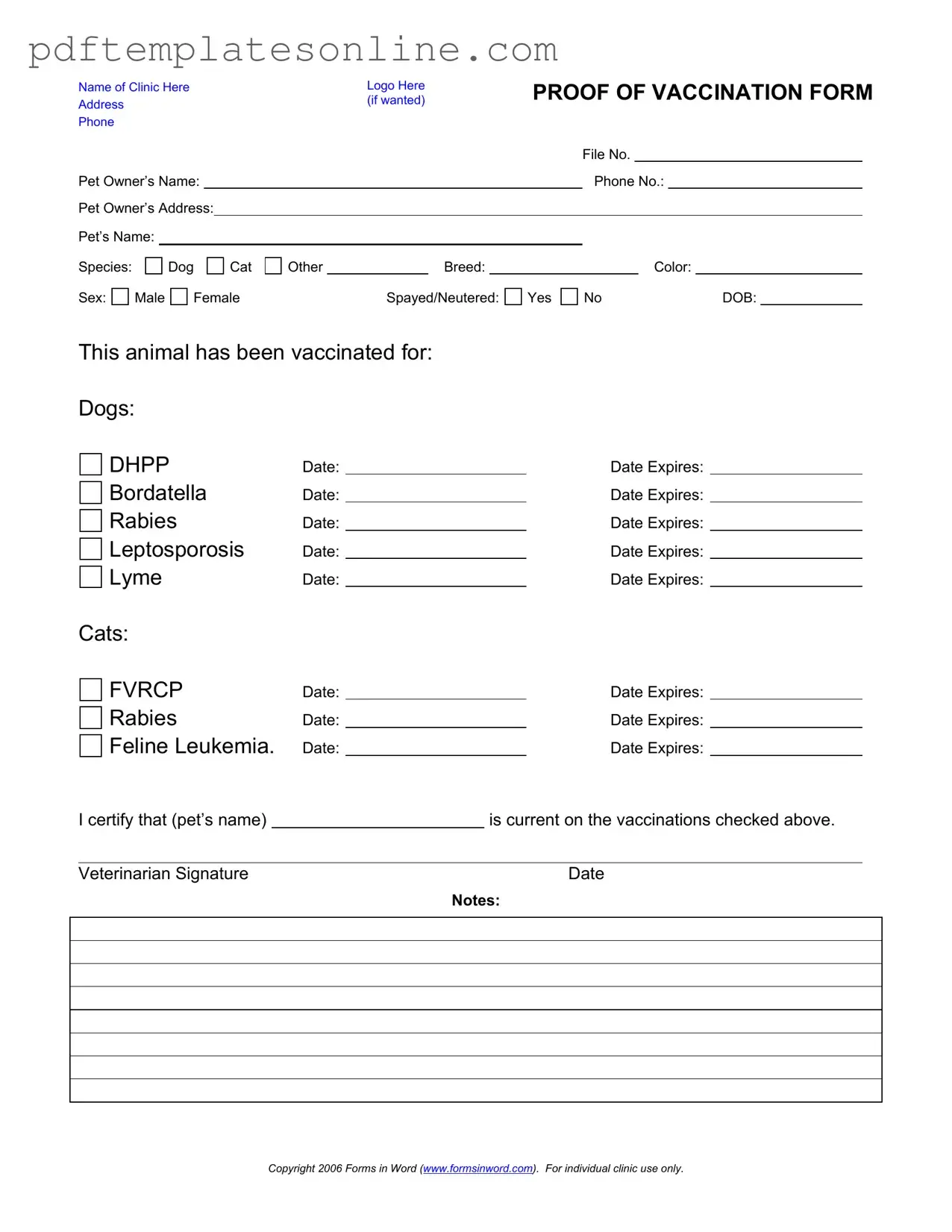Filling out the Proof of Vaccination Dog form may seem straightforward, but many people make common mistakes that can lead to complications. One frequent error is failing to include the pet owner's contact information. Providing a phone number and address is essential, as it allows the clinic to reach the owner if there are any questions or issues regarding the vaccination records.
Another mistake is neglecting to specify the pet's name or species. Without this information, the form lacks clarity. It is crucial to indicate whether the pet is a dog, cat, or other species, as this directly affects the type of vaccinations listed.
People often overlook the breed and color of their pet. While it may seem trivial, these details help identify the pet accurately and ensure that the records are correctly matched to the right animal.
When it comes to vaccination dates, many individuals make the mistake of entering inaccurate or incomplete dates. Each vaccination should have a corresponding date and an expiration date. Missing or incorrect dates can lead to confusion about whether the pet is up to date on vaccinations.
Some pet owners forget to indicate whether their dog is spayed or neutered. This information can be relevant for certain vaccinations and can affect the pet’s overall health profile.
Another common issue arises when people fail to sign the form. The veterinarian's signature is crucial, as it verifies that the vaccinations have been administered. Without this signature, the form may not be accepted by certain organizations or facilities.
Additionally, some individuals do not check all applicable vaccinations. It is important to ensure that all relevant vaccinations for the pet are marked. For example, if a dog has received the Bordetella vaccine, it should be clearly indicated on the form.
Another mistake is not keeping a copy of the completed form. Having a copy for personal records can be beneficial if the original is lost or if proof of vaccination is needed in the future.
Lastly, people sometimes ignore the notes section at the bottom of the form. This area can be used for any additional information or special instructions that may be relevant to the pet's health or vaccination status.
By being aware of these common mistakes, pet owners can ensure that their Proof of Vaccination Dog form is completed accurately and effectively. Taking the time to double-check the information can prevent future complications and ensure that pets receive the care they need.
